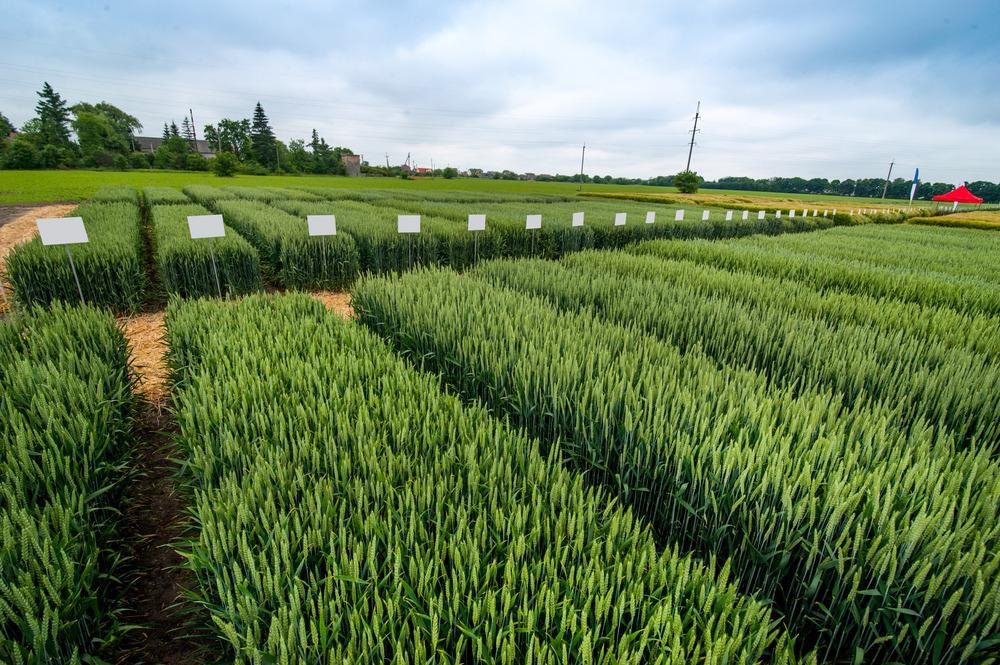Scientists have highlighted the importance of maintaining the genetic diversity of food as it will ensure food security in the future. Some of the factors, such as rapid climatic changes and urbanization have threatened the quality and quantity of agricultural produce.

Image Credit: Rawpixel.com/Shutterstock.com
Scientists believe that protecting genetic diversity will play an important role in sustaining these unfavorable changes. For instance, the genetic information stored in a variety of plants is critical for their growth in adverse conditions, such as drought, flood, salinity, heavy metal contamination, disease resistance, etc.
As stated above, the rapid change in the world’s climate, the continual and rapid growth in the global population as well as a decrease in the agricultural lands due to urbanization have caused erosion in biodiversity both directly and indirectly. Biodiversity means the existence of variation between species in a population and these variations play an important role in adapting to changing conditions. The three major components of biodiversity are genetic diversity, ecosystem diversity, and species diversity. This article focuses on the genetic diversity of food.
Genetic Diversity and Crop Improvement
Genetic diversity is associated with the existence of diverse heritable traits among species in a population. Genetic diversity can be defined as the differences in the genomic sequence that results in varied morphological, biochemical, and physiological properties among species. A narrow genetic diversity will make a species susceptible to biotic and abiotic stress, and as a result, farmers could suffer huge agricultural losses. Genetic variation contributes to evolutionary diversification and is the major source of phenotypic variations.
Several techniques are used to detect the genetic variability between and within crop plants in a population. Some of the techniques are based on morphology, biochemical characterization, and DNA (molecular) marker analysis. Scientists use genetic diversity for developing improved crop plants for sustainable agriculture. They cross different genetic materials to create desirable hybrids of superior performance. Researchers indicated that the potential of crop plants is determined by their magnitude of genetic diversity.
Is Genetic Diversity a Potential Tool for Tackling Problems Associated with Climate Change?
Yes, genetic diversity plays a crucial role in feeding the world, particularly, given the current problems of climatic change. One of the major reasons for climatic change is the emission of greenhouse gases that has increased the global temperature. As stated above, these changes have had a significant impact on agricultural produce, both in terms of quality and quantity. Protecting genetic diversity for food and agriculture will protect millions of people whose food security and livelihood depend on farming, fishing, forestry, aquaculture, etc.
Climatic changes directly affect the production of crops, forest trees, livestock, and aquatic organisms. The ability of plants and animals to withstand and adapt to adverse conditions is due to their genetic diversity. Scientists have mentioned that these adaptive approaches include the introduction of varieties, breeds, and species that have never been raised previously.
It is extremely important to enhance the understanding of genetic resources for food and agriculture; for instance, the position of a gene in a genome and its functions like resistance to particular biotic or abiotic stress is crucial. Conservation of wild species is extremely important as they will protect the genetic traits that can be utilized to develop better adaptive crops in the future.
Proper utilization of genetic resources will help farmers, fishers, and foresters to tackle problems associated with climatic change. Scientists revealed that many locally adapted breeds and varieties of crops and livestock are poorly documented. These species may get lost before their potential role in adapting to various stresses is realized.
Effective measures must be taken to protect these genetic traits from getting destroyed, one such measure would be limited use of broad-spectrum insecticides as it has a detrimental effect on pollinators. A previous report has stated that 50% of the increased agricultural production, in recent years, has been related to the utilization of new seed varieties. The other 50% is associated with advancements in irrigation and fertilization.

Image Credit: Pavlo Baliukh/Shutterstock.com
How to Protect Genetic Diversity of Food?
According to the Food and Agriculture Organization (FAO) of the United Nations, between 1900 and 2000, 75% of crop diversity has been lost. However, over the past decade, there has been a gradual change, where the awareness of the significance of protecting the genetic diversity of crops has increased. Consequently, the number and size of gene banks have increased substantially.
FAO has recently drafted guidelines that encourage increased use of genetic resources as a part of climatic change adaptation plans, such that it will ascertain food security. FAO stressed that conservation of genetic diversity on farmlands is as important as maintaining them in gene banks. Many plants, such as bananas, are extremely important for millions of individuals, whose genetic diversity can only be restored in fields and not in gene banks.
In situ conservation allows the plant to continue to grow and evolve naturally and, thereby, continues the generation of adaptive traits. Further, green revolution technologies have enabled improvements in crop varieties that have resulted in both higher yields and better quality of agricultural produce.
The Consultative Group of International Agricultural Researches (CIGAR) has also introduced gene banks and research centers for conserving stable food crops around the world. FAO supports the International Treaty on Plant Genetic Resources (ITPGR) and United Nations has also supported the Convention on Biological Diversity (CBD) in order to maintain genetic diversity. However, more research on the genetic diversity of agricultural products is required. A proper genetic inventory would help maintain local, national as well as international agricultural genetic resources.
Sources:
- Begna, T. (2021) Role and economic importance of crop genetic diversity in food security. International Journal of Agricultural Science and Food Technology. 7(1). pp. 164-169. DOI: 10.17352/2455-815X.000104
- Genetic diversity a hidden tool in coping with climate change. (2015) Food and Agriculture Organization of the United Nation. [Online] Available at: https://www.fao.org/news/story/en/item/275041/icode/
- Govindaraj, M. et al. (2015). Importance of Genetic Diversity Assessment in Crop Plants and Its Recent Advances: An Overview of Its Analytical Perspectives. Genetics Research International. 431487. pp. 14. https://doi.org/10.1155/2015/431487
- Esquinas-Alcázar, J. (2005) Protecting crop genetic diversity for food security: political, ethical and technical challenges. Nature Reviews Genetics. 6. pp. 946–953. https://doi.org/10.1038/nrg1729
- https://www.hindawi.com/journals/gri/2015/431487/
Further Reading